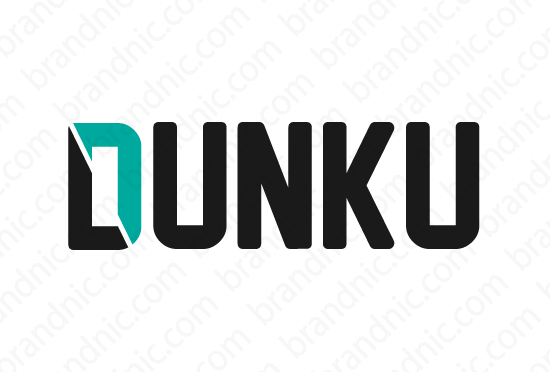Read Time: 13 minutes
Table of Contents
1. Can You Patent Your Business Idea?
2. How To Patent Your Business Idea?
3. Know Your Idea Well
4. Conduct a Thorough Research on Your Idea
5. Use the Patents Carefully and Where Necessary
6. Draft the Patent Application
7. Wait For the Response
8. Limitations of Using Patent as a Way of Protecting a Business Idea
9. What Should I Do To Protect My Business Idea Without a Patent?
10. How Should I Legally Trademark an Idea?
11. Benefits of Trademarking a Business Idea
Do you have an existing business idea that you would like to protect? Coming up with a business idea can be so tough. It is even tougher when you want to protect it. However tough it may be, it’s very crucial to ensure your business idea is protected. There are many reasons as to why you should protect your business idea as you will learn later on. The importance of this topic depends largely on your business concept.
While you prepare to learn a bunch of stuff regarding the protection, remember that unprotected business idea is always running a very huge risk.
Can You Patent Your Business Idea?
Before asking yourself this question, you need to understand that a business idea can be your invention and sometimes it may not be. This brings us to a point where we need to know what can and what cannot be panted.
Take a look at the section below where examples are also included to ensure you grasp the content better.

Finding if you can patent your business idea.
Inventions cannot be intriguing ideas. It takes a lot for an invention to be regarded as an invention by the United States Patent and Trademark Office. For example, you may discover a certain product from a whale that can cure the human brain function. You further theorize that the product can act as an anti-depressant when mixed with other products at a certain concentration. This sounds more of an invention. However, you will be required to go the extra mile and produce the cure for Alzheimer’s brain disease and the anti-depressant. The curing product shall then be tested to confirm that it works. Thereafter, your idea won’t be an intriguing one instead, it will be a real invention. Hence, patentable.
Natural discoveries cannot be patented since they aren’t inventions. You may be out there hunting and you come across a certain tree that you haven’t seen in your life. After carrying out research, you realize that the plant hasn’t been discovered yet. Automatically, the idea of that discovery being an invention will creep on your mind and you would like to patent it. According to USPTO, such an invention cannot be patented. To be patented, you will have to modify the plant or even assimilate it as part of bigger inventions.
Inventions should be practical. For an invention to be patentable, it needs to have ideas that can be applicable in real life and trigger results. For example, if you discover a formula, it should be connected to a certain process that when followed, people would have access to a solution or something helpful.
As of now, you should have a clue of where your business idea lies and the next thing you would like to know is how you can patent it.
How To Patent Your Business Idea?
There are legal procedures that you need to undertake as required by the USPTO.
Under US law, there are three patents.
These are; Utility patents, design patents, and plant patents. The utility patent is the common one but it’s important to understand both of them.
Make sure to understand that trademarking a slogan or a tagline is different than trademarking your company name
Below is a comprehensive explanation for each type of patent. There is also provisional patent but we’ll focus on the three main types.
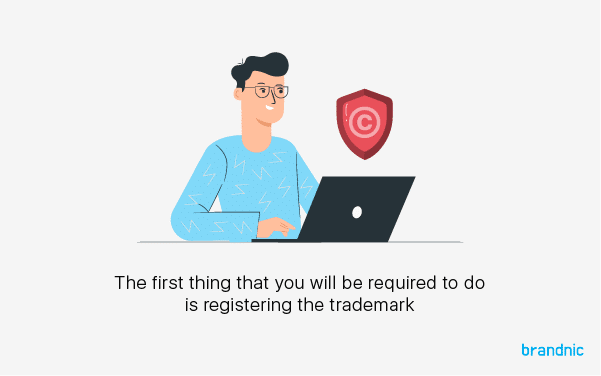
Understanding and starting to patent your business idea.
1. Utility Patent
Novelty ideas often fall under one of these five categories of Utility Patent; Manufacture, the composition of matter, process, machine or improving an idea that already exists. However, some inventions fall under more than one of these categories. Utility patent operates differently in the sense that your business idea will be categorized only in one category even if it falls in multiple categories.
Business ideas and inventions that mostly fall under utility Patents are those from computer hardware, chemical formulas & software, etc.
A utility patent is important for your business since you will have up to 20 years from the date you filed. Under this span, no one will be able to use, sell or import your idea. Therefore, you get a good chance to expand and develop your business.
2. Design Patent
A design patent is filed on product designs. This limitation defines why design patent isn’t common in the U.S compared to other patents. The design, in this case, is supposed to be aesthetic and not functioning.
When you acquire a design patent, it lasts for up to 14 years.
It is in this period where you can put restrictions from importing or using the design hence, getting a chance to extensively grow your business.
3. Plant Patent
Here comes the last and the least applied patent. Plant patent, as the name suggests, the patent mainly focusses on different inventions on plants.
For this reason, plant patent is mostly used by agricultural experts and other related people.
A plant patent can be active up to 20 years from the date of filing. Now, you need to critically understand the process of patenting your business idea. Proceed to the section below to find a comprehensive discussion.
Know Your Idea Well
This is the first step that you need to take – critically understanding your idea. Here, you should be able to ask yourself some questions such as what aspects of your business idea makes it useful and unique. Thereafter, consider the setting of your idea. The setting of your business idea may include what other things could be done to make the idea more unique or more useful.
For example, let’s say you invented the cooking machine that uses oxygen to operate. Talking of the setting, in this case, it may include the products that can be used as alternatives instead of oxygen. In short, your idea needs to very useful to different users. Ensure it doesn’t limit them.

You must sure of your idea and ready to explain in detail.
You can also move on and determine whether your idea can be used in different ways rather than the main one. For example, can the cooking machine be modified in different ways and be used in different areas apart from cooking? If the idea can be modified in different ways then, it becomes more useful and unique. In turn, you will access a wide range of strategic options and your patent will be more valuable.
Conduct a Thorough Research on Your Idea

Making sure if your idea is exclusively new or it already exists.
It has been aforementioned that patents come along with limitations. The first thing that you need to understand is that your idea should be new.
According to the USPTO, one of the biggest reasons to patent an idea is to guarantee the inventor to teach different benefits regarding the idea.
The only assumption that can be drawn in this case is that the idea should be completely new. If it’s not then you have no rights to the idea since the patent wouldn’t be of any benefit. So, carrying thorough research enables you to determine whether the idea is exclusively new or it already exists.
Remember a patent that has been issued can be disqualified when the USPTO realizes that your ideas are somewhat plagiarized.
Use the Patents Carefully and Where Necessary
Let’s use our example of the cooking machine. Maybe the machine looks great but some adjustments can be done to make it more useful. You may want to equip the machine with pressure sensitive tools. In this case, you can consider filing a provisional patent.
The provisional patent will act as proof that you are the inventor of the idea till the date you will file the patent.
The provisional patent can take up to a year. Thereafter, you can consider filing the utility patent.
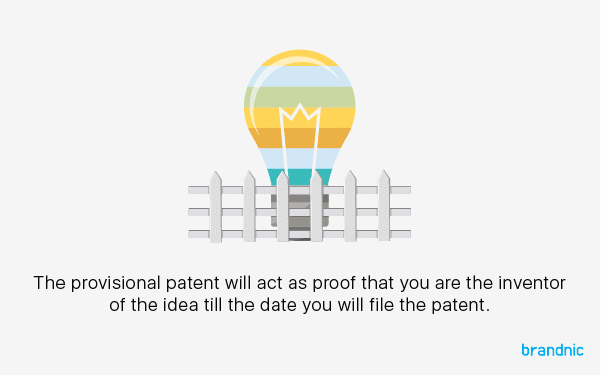
Multiple patents can make your idea more valuable, both the design and the idea.
Under the period covered by the provisional patent, you can perfect the idea in different ways. If the machine has a distinctive appearance, you may consider filing a design patent. From the explanation above, you can file two different patents for your cooking machine. That is a design patent and utility patent. Design patent will cover its general appearance while the utility patent will protect the usage and functionality. Multiple patents make your idea more valuable. Note, the cooking machine has been used as an example.
Draft the Patent Application
This is the most involving and perhaps tricky.
Applying for a patent includes a wide range of information which may require you to hire an expert to avoid erroneous filing.
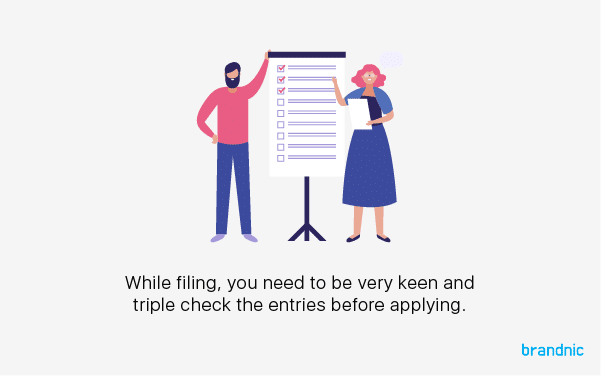
Check everything multiple times to make sure that there is no mistake in your application.
You should understand that filing the wrong information can lead to rejection. The good thing is that there is a manual that contains all the procedures to be taken.
While filing, you need to be very keen and triple check the entries before applying.
Some errors may just draw you in a small punishment where you will pay some money. Bigger mistakes, on the other hand, would result in rejection.
This explains why most people higher attorneys to make the application. Remember that drafting the application is a special skill that very few can perform perfectly.
Wait For the Response
Congratulations! You are almost done. After doing everything including the submission of your application, you now have to wait for the formal response. It will only cost you patience.
Expect the response after a year or longer.
It takes this long since a lot of research to determine eligibility would be conducted. Besides, the application will be checked whether it meets all requirements and that it doesn’t transgress the laws.

The ideas will only be patentable if you successfully pass your patentability test.
You shouldn’t have too much confidence thinking that the application was perfect and the response would automatically be positive. The contrary may happen. If the examiner responds by telling you that the idea doesn’t possess originality hence, unfit for a patent, you will have to draft a response. The response may see your idea being reconsidered. Therefore, you will need an expert to craft the response.
However, your idea will be patentable only if it passes the patentability test.
The test examines the following aspects;
Utility test: this test is conducted mainly to determine whether the idea would have a positive impact on the world. Would it help people in solving problems? Would it be useful in different ways?
Non-obviousness test: Here, the idea undergoes a comparison with the previous ideas to determine obviousness through the differences found. If the idea is found to be obvious, it’ll be disregarded since it’s not patentable.
Novelty Test: This test is conducted to determine the originality of the idea. A comparison with similar ideas will be conducted. Pure original ideas are the only ones that can be patented.
Limitations of Using Patent as a Way of Protecting a Business Idea
From the ongoing, you should have noticed that there are a good number of limitations that someone may encounter.
Let’s see some of the possible limitations.

The limitations apply – and it’s not a great option for small businesses.
Patenting is expensive. Among all methods of protecting a business idea, patenting is the most expensive one. Depending on the type of patent that you need to protect your idea, you will be required to use thousands of dollars to be granted a patent.
It takes time. We’ve seen earlier that after you file a patent, you will have to wait for a year or longer before approval. This period is relatively higher compared to other methods.
Defending your patent. You don’t file a patent and directly getting approved. USPTO examiners will ask you different questions on the same just to determine eligibility. In case you provide poor reasoning or fail to defend some aspects of the idea, you are in jeopardy of losing the patent.
These limitations define why patenting a business idea sounds very hard for many people. It’s not even ideal for small businesses.
What Should I Do To Protect My Business Idea Without a Patent?
So, you have the business idea and you are sure it’s very unique hence worth protection. Well, patenting business ideas is one of the major ways of protecting them. However, the process of patenting a business idea is very expensive and takes a couple of years.
Very few people patent their business ideas.
The big figure left opts for other options. So, how to copyright your business concept without a patent is a crucial topic that all businesspeople can’t afford to miss. Now that you are here and want to know the alternatives that can be used to protect business ideas, consider the following:
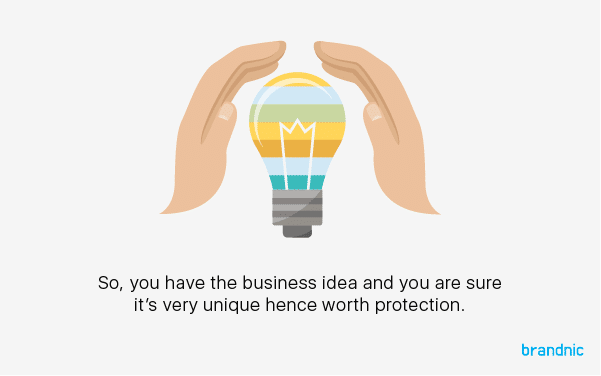
Making sure that you do all the agreements.
1. Sign a Confidentiality Agreement
A confidentiality agreement is a legal contract that involves two or more parties. The parties agree on confidential outlines such as knowledge, information or even material. The parties agree on sharing the confidential outlines but restrict third parties to have access to the information, knowledge or material. This is a way of protecting your business idea since the public doesn’t have access to it hence, making the utmost investment. You should also note that there are different types of confidentiality agreements. They include; attorney-client privilege, bank – client confidentiality, priest-penitent privilege, and doctor-patient confidentiality.
2. Covenant not to Compete Agreement
This is a type of clause or agreement where one party agrees with another not to enter into a certain business idea. Here, one of the parties gets restricted hence, leaving one to venture into the idea. However, this agreement is set for a specified span. It is not commonly used among people but it’s still an option for protecting your business idea.
3. Retainer Agreement
This is a contractual provision based on the performance of different services. This agreement involves a client getting paid to come up with business ideas under the copyright of the one who pays the client. Therefore, someone else invents an idea for you in return for a payment. Since this agreement is known, you will be required to mention the person or group of people who invented it. They will be considered as co-inventors and won’t own the rights of the idea.
If you have been careful, you should have realized that these methods are all agreements. It can, therefore, be deduced that protecting your business idea may hugely require the help of other people. These methods are different from patenting in the sense that, with patenting you don’t necessarily need help from other people while these methods it’s a must.
How Should I Legally Trademark an Idea?
How do I trademark an idea? This question should have been creeping on your mind if you have a new business idea. Well, different ways can be used to legally trademark your idea. The first thing that you will be required to do is registering the trademark. Trademarks are important in the sense that you can protect your idea where other people and companies won’t be able to use it or sell for their benefits. Follow the following steps for a successful trademarking.
Search for the idea to confirm that it’s a novelty. This is the first step that you need to take. By searching, you will be able to figure out whether your idea is new or it already exists. You should terminate the process if you find out that the idea already exists since the USPTO would disregard it.
Present a physical mark. Since the trademark is an intellectual property that is made of recognizable marks, signs, designs or expressions, USPTO requires you to submit a physical mark – it can be in the form of a drawing. USPTO examiners will use the mark to determine whether it represents a new idea or it’s similar to an already existing trademark. If it gets approved, the trademark becomes part of the USPTO database. When other people search for your trademark, it would appear hence, forbidding them from using it.
Define the filing grounds of your application. A trademark may fall into two major conditions. First, you may have already been using the trademark for your established business. Secondly, you may not have started using it but you are waiting to file it first. USPTO will require you to provide this information.
Apply. Today, the internet has triggered a lot of applications to be done online and so does the trademark application process. The online application replaces the need to use hard copies while applying since it’s a waste of time and energy. You will have to access the USPTO’s Trademark Electronic Application System (TEAS). Filing forms will be sent to you after you provide the basic information that includes personal information and the trademark details. Note that there are charging rates that apply. The standard charging rate is $275. However, additional fees may apply under different conditions. Your name and contact information may also be required.
Stay updated on your application status. After you have filled and submitted the application, you may consider staying updated. Trademark Applications and Registrations Retrieval (TARR) is a system responsible for tracking updates. Since the application approval process can take a year or longer, you can choose to use this system and get the updates on your application. The law allows owners to use the trademark even if it’s still under approval. However, tracking your application status isn’t mandatory.
Renew your ownership. After the application has been approved, you’re now the legal owner of the trademark. In the US, a trademark is valid for up to ten years and can be renewed. However, USPTO requires owners to file a certificate of affidavit between the fifth and sixth years to state that the trademark is still in use failure to which the registration gets canceled.
Benefits of Trademarking a Business Idea
Trademarking a business idea is one of the commonly used protection methods. That clearly shows there are good reasons. What could they be?
Let’s find out.
- A trademark protects your business idea from being explored by other people.
- When you register a trademark, it will appear on search results when other people search for it hence, preventing them from inventing ideas similar to yours. In turn, this plays a key role in reducing competition hence, a more thriving business.
- Trademark owners have legal rights to file a lawsuit in the court of law once they find someone plagiarizing their ideas.
- Trademark registration puts your business idea safer and limits others from claiming that your idea is similar to theirs. Etc.

Enjoy the perks of trademarking your business idea.
Not to find out how to trademark your business name? Read the in-depth step by step guide
This is the end of the guide hoping that it was helpful. However, as a word of caution, be confident you are more careful when approaching any of these methods to protect your business idea. Since most of the things are done online, you may be easily scammed in case you are not careful. Also, ensure the business idea is a great one and that chances of getting rejected are very meager. Remember doing the wrong thing can waste your money and time that could have been invested in other stuff to trigger productivity.













